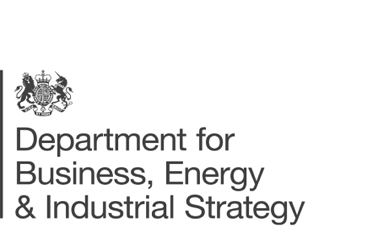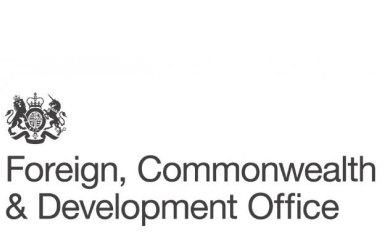This CONPES document formulates a national policy for digital transformation and artificial intelligence. This policy aims to promote the generation of social and economic value in the country through the strategic use of digital technologies in the public sector and the private sector, to boost productivity and promote the well-being of citizens, as well as generating transversal enablers for digital transformation, so that Colombia can take advantage of the opportunities and face the challenges related to the Fourth Industrial Revolution (4IR). Digital transformation of construction is specifically mentioned within section 5.3.2. Create enabling conditions for digital innovation in the public and private sectors, with the purpose of being a mechanism for the development of digital transformation. On page 47 of the policy.
https://colaboracion.dnp.gov.co/CDT/Conpes/Econ%C3%B3micos/3975.pdf*
This document indicates how information management aligned with ISO 19650 will be carried out on the Aeropuerto del Café project.
ISO 19650 is the prominent global standard for the implementation of BIM, focusing on the collaborative process integral to the entire life cycle of constructed assets. Developed and published by the International Organization for Standardization (ISO), this standard serves as a comprehensive framework for managing information from the conception of a project, through construction and operation to its eventual decommissioning. The development and publication of ISO 19650 highlights the commitment of international standards bodies to creating a consistent and efficient approach to BIM implementation on a global scale.
ISO 19650 is a multi-part standard. Part 1 delineates fundamental concepts and principles, while Part 2 provides practical guidance for information management throughout the project life cycle. The scalability of ISO 19650 allows organizations to tailor its application to the specific needs and intricacies of their projects. As an internationally recognized standard, ISO 19650 reflects the collaborative efforts of standards bodies to enhance global construction industry practices. Throughout this process, transparency, collaboration, and consensus-building are key principles. ISO standards, including ISO 19650, are developed with input from experts and stakeholders worldwide to ensure that they reflect a global consensus on best practices.
A country might choose to adopt ISO 19650 for several reasons, all of which contribute to the standard’s potential benefits in enhancing the efficiency and effectiveness of construction and infrastructure projects. Some of the reasons why a country might decide to adopt ISO 19650:
- Global standardisation of processes
- Support interoperability and collaboration
- Consider a quality assured approach to information management
- Competitive advantage and potential for cross boarder trade
- Improved project delivery outcomes
In summary, the adoption of ISO 19650 by a country can bring about international alignment, improved collaboration, risk reduction, and enhanced competitiveness in the construction industry, ultimately contributing to more successful and sustainable infrastructure development. Countries will usually adopt ISO 19650 by publishing a national annex to the standard.
Developed by the Colombia’s BIM Technical committee, this guide to Standards, Methods and BIM Procedures helps to explain and outline all the elements needed for adopting BIM in a structured and consistent way. It helps to explain the technical framework for BIM in Colombia.
This document aims to guide the project’s parties in the definition of standards, norms, methods and procedures required for BIM implementation in a structured and consistent way. It supports the creation of a collaboration plan from the early stages of a project, including permits and the structure of collaboration. This will help team members to optimise communication during the development of the project, allowing the efficiency of a collaborative management system, in order to:
- Give a clear definition of the information that the project client or asset owner needs, as well as the methods, processes, deadlines and protocols for the development and verification of this information.
- Ensure that the quantity and quality of the information developed is sufficient to satisfy the defined needs.
- Allow efficient and effective transfers of information between the different participating agents in each part of the asset lifecycle, especially between the development phases.
Developed by the Colombia’s BIM Technical committee, this BIM Application Guide helps to explain and outline all BIM components that should be considered as part of a project. This helps to form an agenda of elements for BIM adoption at the project level as national guidance.
This protocol defines the products, processes and responsibilities with respect to the management of information and BIM models during the lifecycle of a project. All the activities of the BIM process associated with the project will be completed based on the application of NTC-ISO 19650-1.2; 2021 [Organization and digitization of information in buildings and civil engineering works, including BIM]. The objective of this document is to define the requirements, processes and tools necessary for BIM information management, according to ISO-19650.
The National BIM Strategy 2020 – 2026 is the strategy for the modernisation of the construction and infrastructure sector through collaborative processes using standardised information in a digital environment. The objectives of the strategy are to improve consistency, efficiency and cost savings. These will be achieved through the progressive implementation for national projects and/or projects co-financed by the National Government, which is providing the public leadership.
The Colombian Government’s BIM Website offers a home for the Colombia’s BIM Strategy document, a library of standards, guides, templates and presentations. The website also contains a series of training materials focused around BIM fundamentals and BIM for project managers.
Empresa de Desarrollo Urbano de MedellÃn (EDU) is a public-private urban development company geared towards improving living standards for local residents.This is made possible within sectors such as housing, through designs enabled by BIM. Out of a team of 150 members, 47 of EDU’s staff work regularly with BIM. As such, EDU are a project developer and management entity that centralizes and develops urban and architectonic projects.
This legislation incorporates BIM into the urban planning process in regions that have the capacity to accommodate the digitisation of processing and issuing building permits. The pilot programme will simplify the filing, analysis and issuance of building licenses.
An archive version of this information article has been created if the original is no longer accessible (Archive information from January 2024)
Colombia is creating a collaborative BIM framework strategy aimed at promoting digital transformation in its construction and infrastructure sectors. The goal, to achieve the centralization of the whole information regarding the public infrastructure projects leading to at least 10 percent savings in costs, will take place over the next seven years. Digitisation of national projects will become mandatory by 2026.
An archive version of this information article has been created if the original is no longer accessible (Archive information from January 2024)


